Best fat bike tires: a guide to our favorite fat mountain bike tires
This year’s best fat bike tires that’ll boost your fat bike's performance on the trails
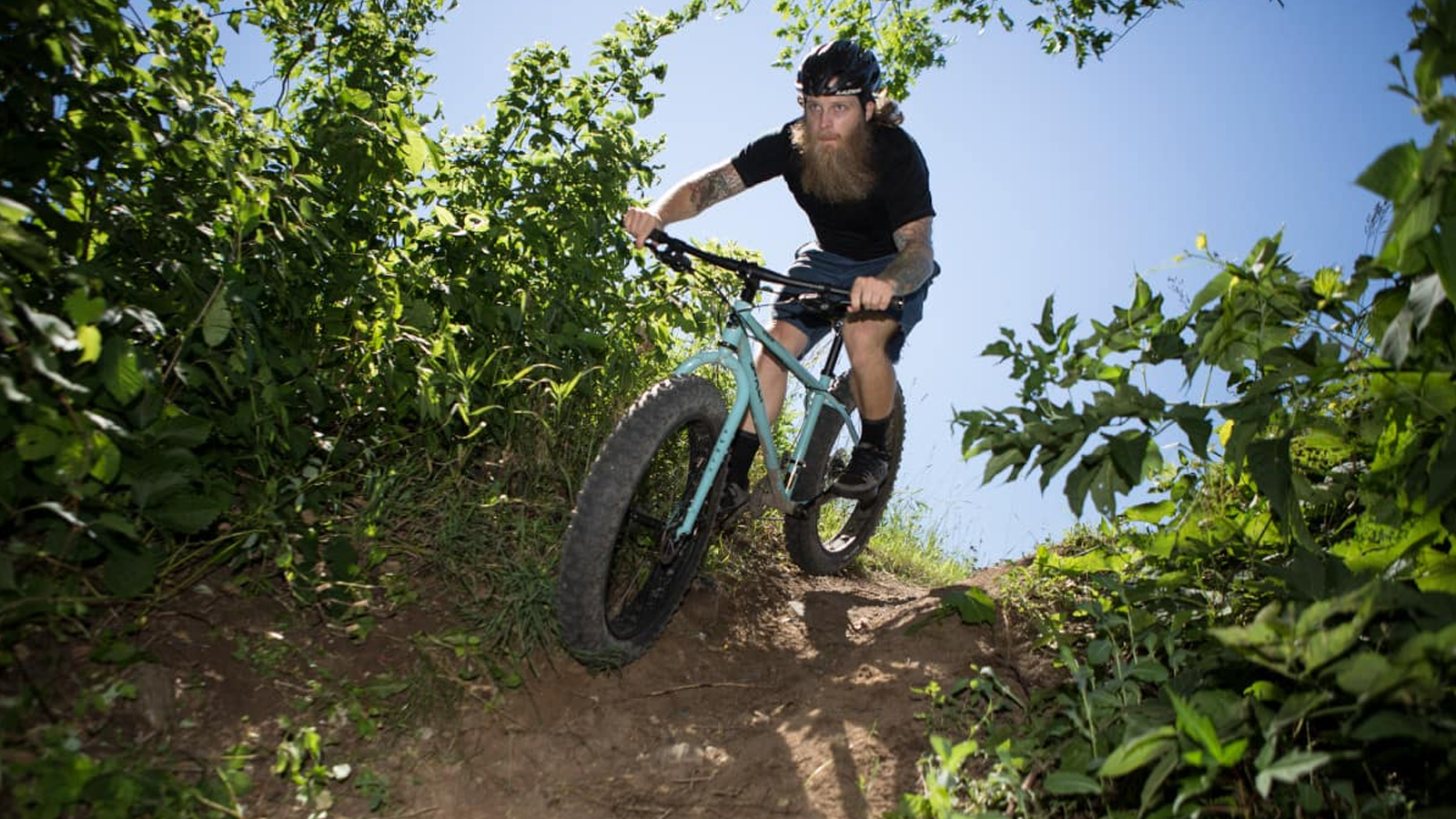
You may not need a fat bike, but since when has need had to do with anything bike-related? The tires are the main ingredient of a fat bike so selecting the best fat bike tires is a must in order to generate the desired grip and comfort levels. More often than not, the large volume tires are the bike's only form of suspension, so selecting ones with a great feel is critical. As a rule, low profile tires roll faster, whereas chunkier tread patterns offer higher grip levels in testing terrain.
With tires being the only part of your mountain bike that physically touches the ground, choosing the right ones is vital in ensuring you stay in control on the trails, and choosing a tread pattern and casing design that best suits your riding style and terrain needs proper consideration. It’s also the component that allows you to explore unique terrains and environments.
Scroll down to view Bike Perfect's top recommendations and what you should consider when shopping for fresh super-wide rubber.
Best fat bike tires
Why trust BikePerfect
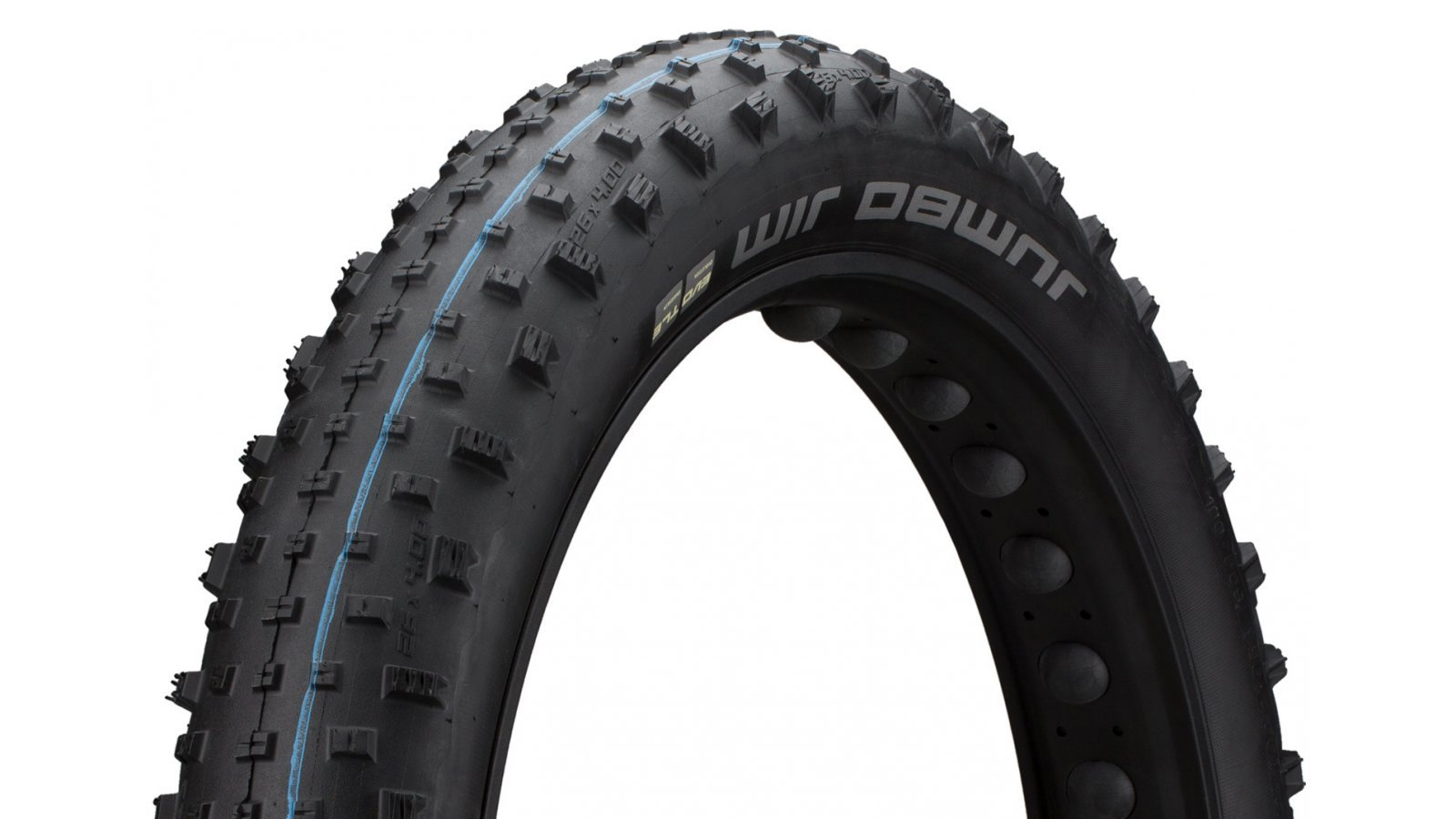
Schwalbe Jumbo Jim Addix SnakeSkin
Specifications
Reasons to buy
Reasons to avoid
With a slim tread pattern and relatively low weight, the Jumbo Jim from rubber giants Schwalbe is a great option for those wanting to increase the speed and agility of their fat bike. Keeping the rolling resistance low is Schwalbe's 'Speedgrip' compound which aims to offer maximum rolling speed without compromising on grip, something it carries out impressively well. The overall feel of the tire is great and it improves comfort and calmness when riding.
The downside of the low weight and slim construction is it’s not the most resilient to aggressive riders and chunky terrain so if you’re a heavy hitter, better options do exist. However, if outright speed is your priority the Jumbo Jim is a guaranteed winner.
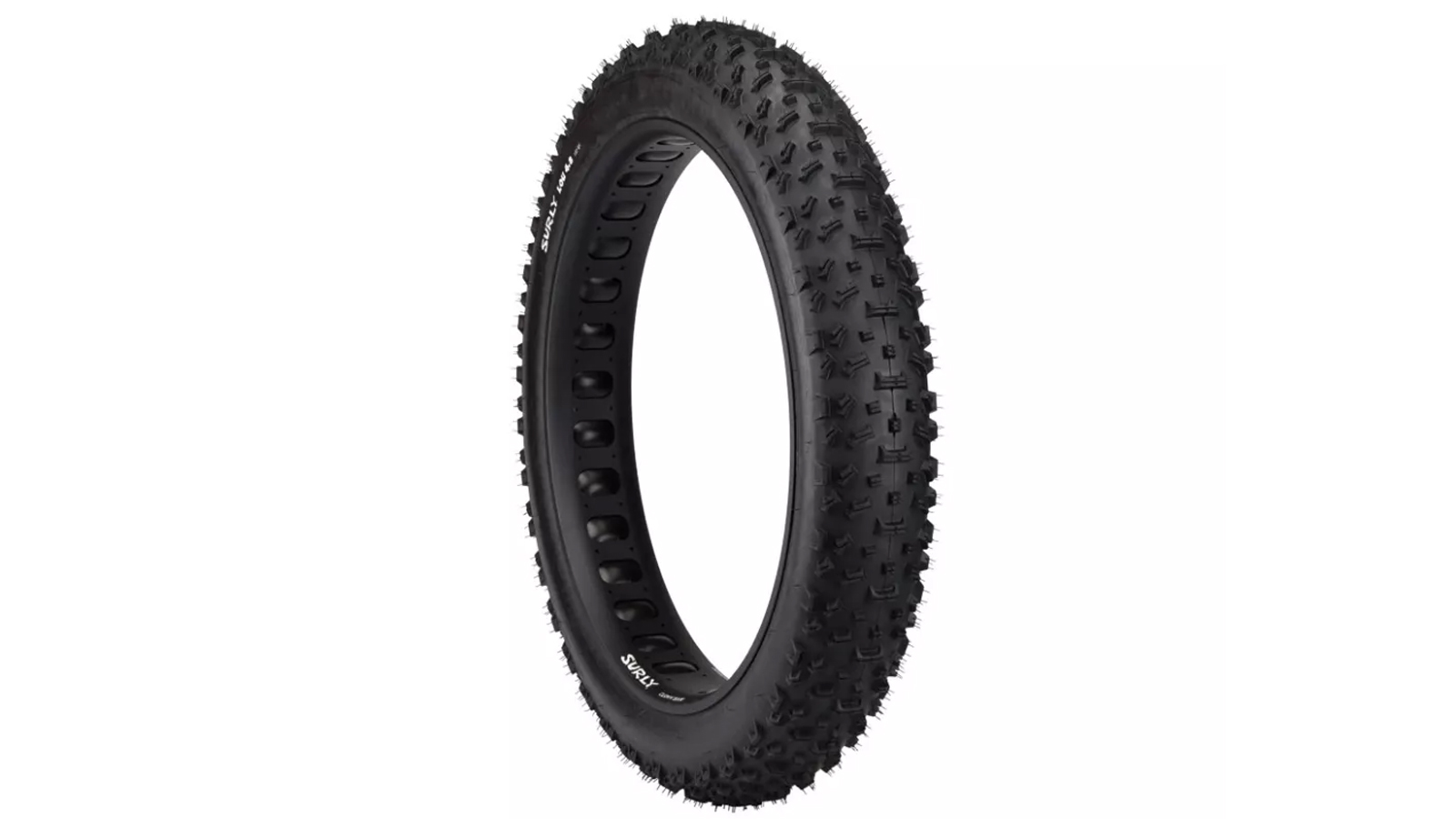
Surly Lou Folding
Specifications
Reasons to buy
Reasons to avoid
Surly is often seen as the king of obscure fat bikes, and the rear-specific Lou tire is a fine example of its category expertise. With block-shaped knobs standing at 7mm tall there’s plenty of tread to dig in, purchase and drive the bike forwards on a mixed bag of terrain. Regardless of whether it's slimy roots or sun-kissed sand, the Lou contains all of the correct shapes to generate the grip. Considering its chunky nature, the angled center knobs mean it doesn’t roll as bad as you may think.
This won’t be a tire for those who want a rapid rolling featherweight, but if you’re taking on multi-day adventures or searching out rocky tech, the extra reinforcement and aggressive tread design will be a major bonus.
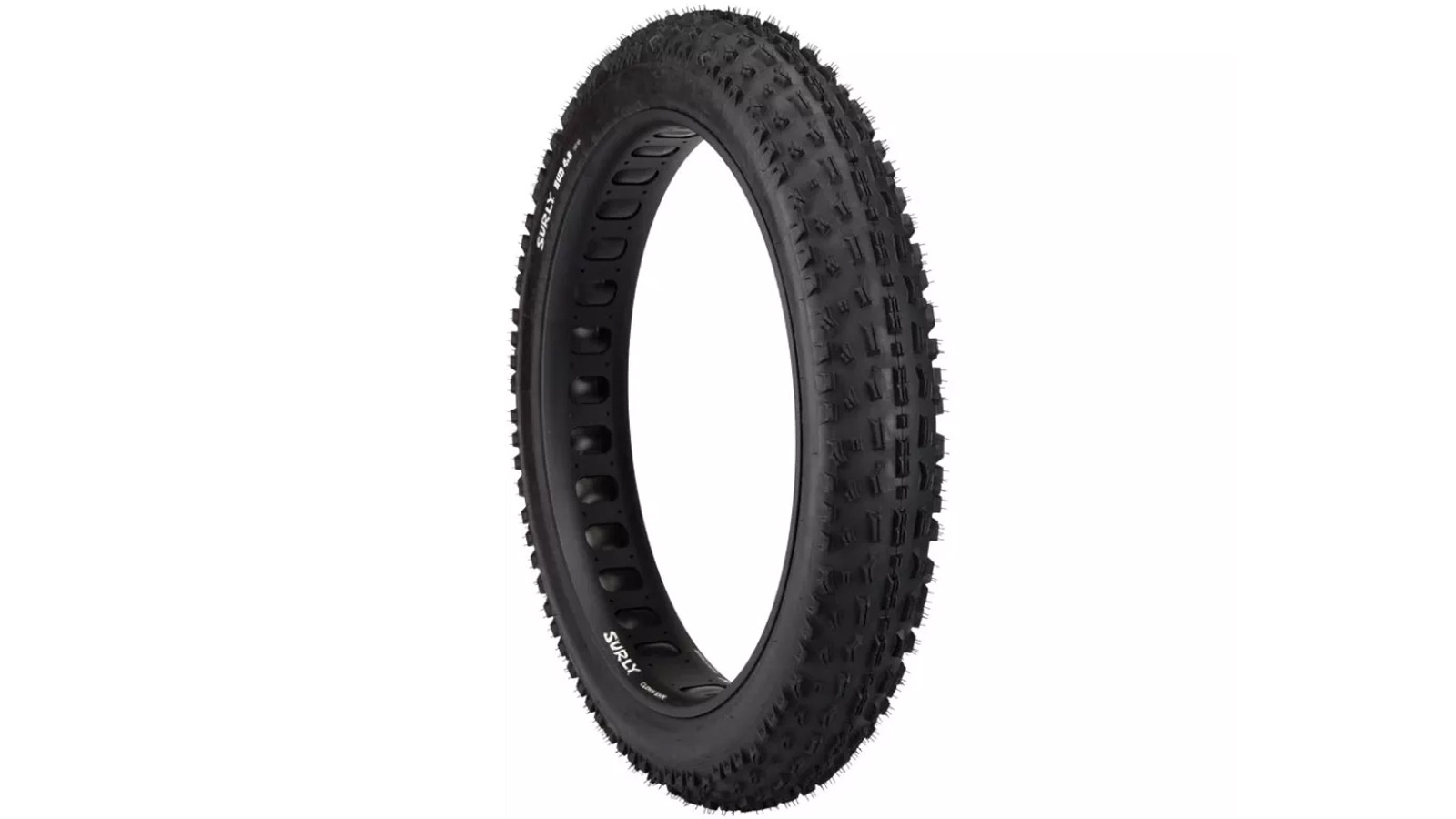
Surly Bud Folding
Specifications
Reasons to buy
Reasons to avoid
The Bud is the front wheel companion to the above rear-specific Lou and is designed with cornering and braking in mind. The Bud’s tread pattern lends itself well to shedding mud and snow, meaning the tire remains clean and ready to grip onto the trail surface.
Again, it’s by no means light, but the super effective tread pattern, puncture protection and tubeless compatibility make a ton of sense for riders pushing the boundaries or just looking for that extra level of reliability. When paired with the Lou it’s one of the best combinations around.
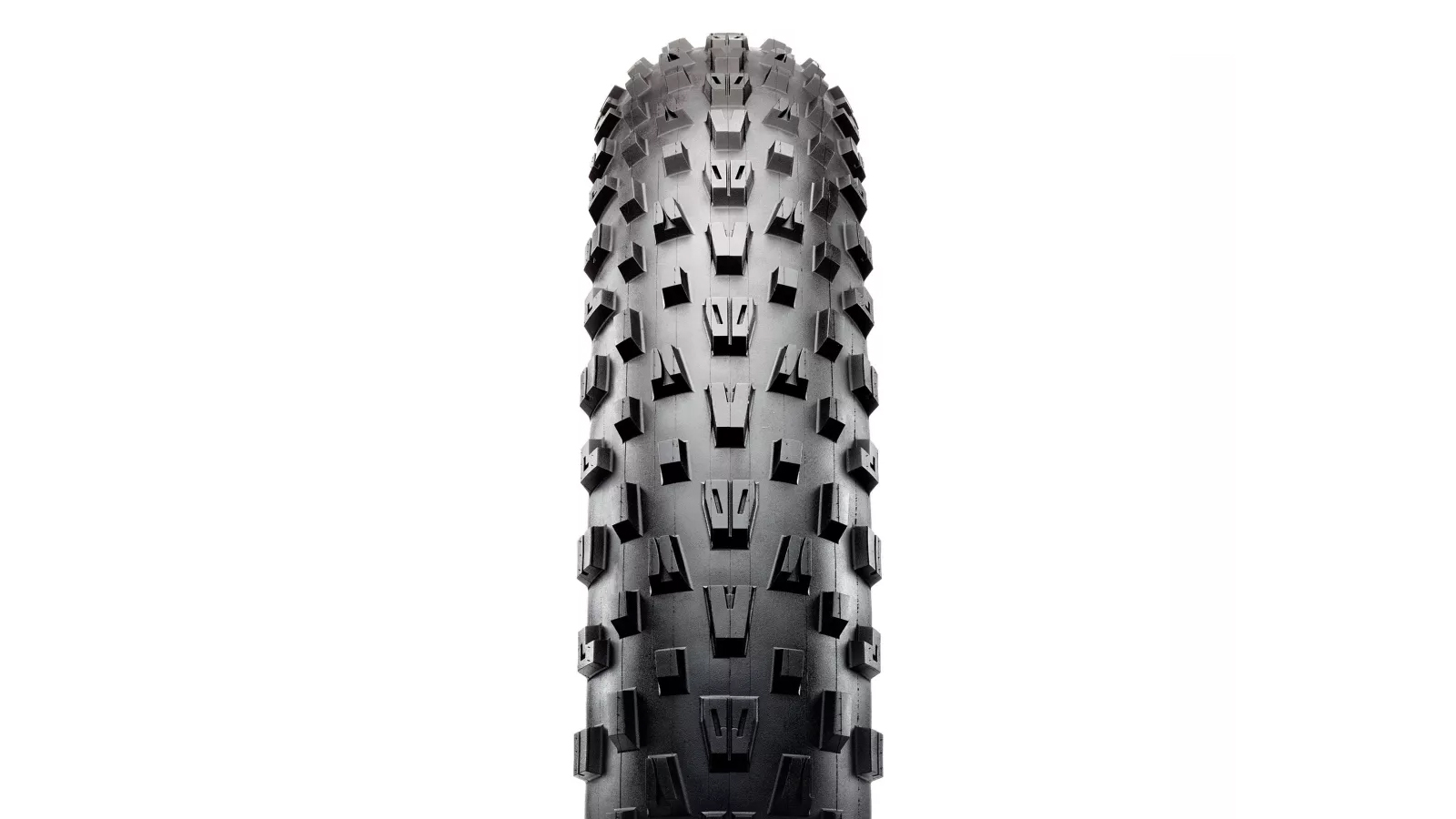
Maxxis Minion FBF Dual Compound
Specifications
Reasons to buy
Reasons to avoid
The Maxxis Minion is a tire that certainly needs no introduction, and the FBF takes the proven DHF tread pattern and tailers it into fat bike ready rubber. Sporting the same tread pattern as the regular DHF means pure cornering grip is prioritized, but due to the knob shape and directions, it rolls impressively fast too. It’s also super easy to fit, and Maxxis’ tubeless system remains one of our favorites.
The FBF also sees a dual-compound rubber blend construction. This means the center knobs use a firmer rubber to boost rolling speed, whereas the side knobs are softer to further improve cornering traction. On the trail, this is a tire that fills you with confidence and always provides the most reliable levels of grip, right up until the muddiest conditions. Best of all this high level of performance comes in at a totally killer price.
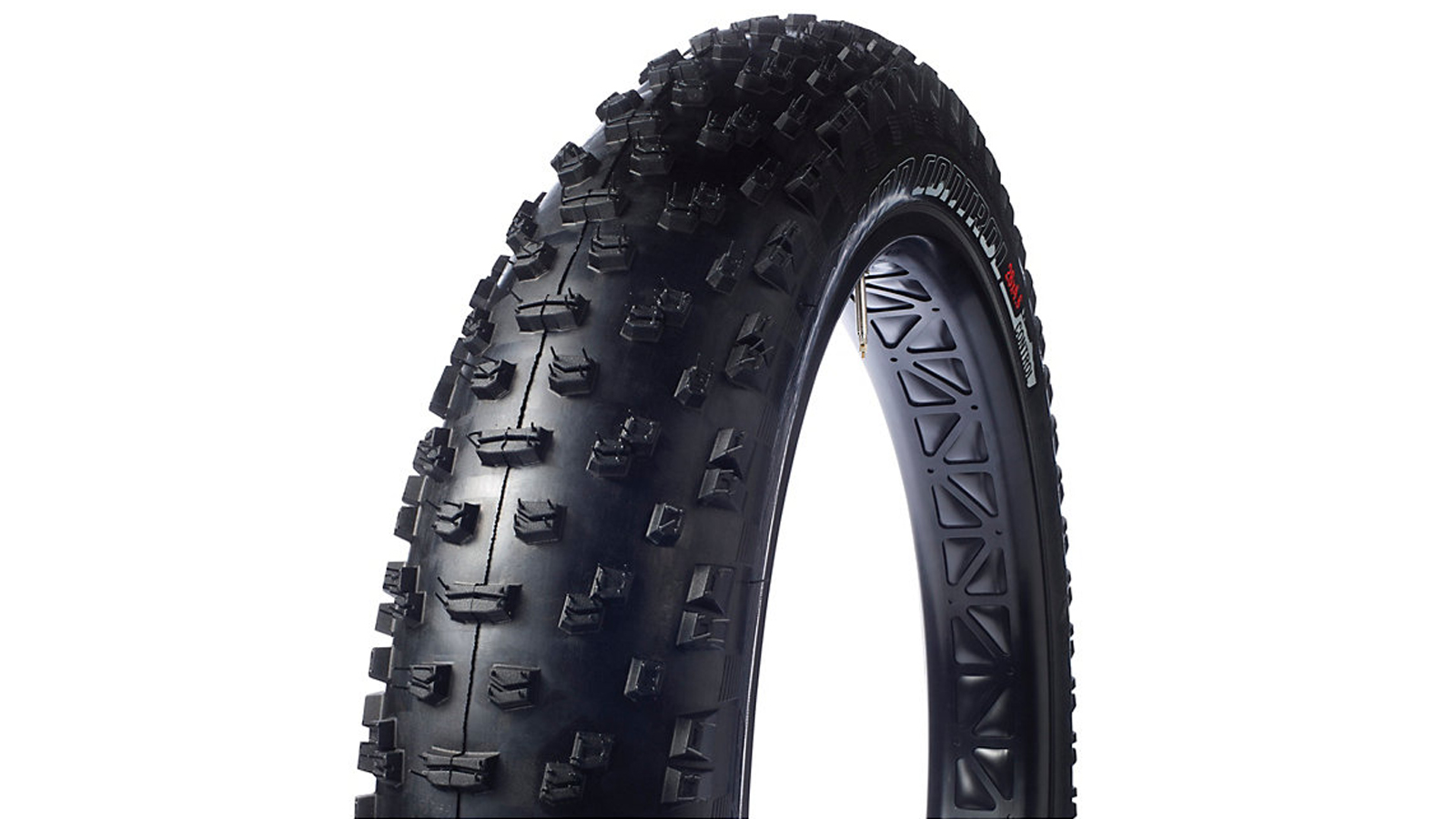
Specialized Ground Control Fat
Specifications
Reasons to buy
Reasons to avoid
Using the same tread pattern as the regular width ground control makes for a tire with predictable grip across a wide range of conditions. Sporting chunky, well-positioned side knobs mean there's tons of hold in the corners, and a chamfered-edge center tread digs in well under braking. The available 4.0in and 4.6in widths leave scope for desired setup, rim width and bike focus.
It’s fully tubeless ready, and as with all Specialized tires, it blows up with ease and remains reliable.
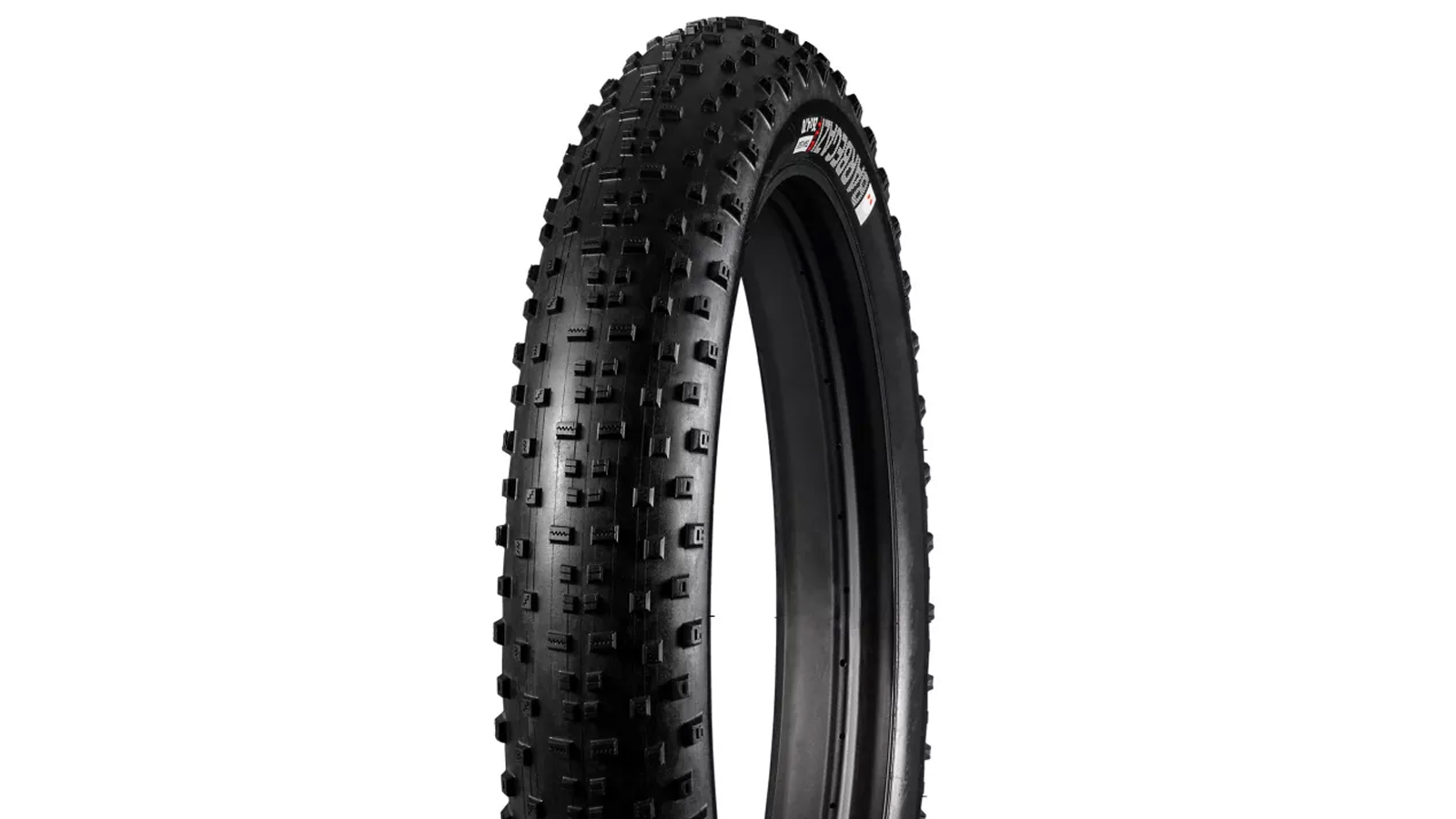
Bontrager Barbegazi Folding Team
Specifications
Reasons to buy
Reasons to avoid
Bontrager tires have a reputation for feeling good on the trail and the Barbegazi’s 120TPI casing showcases this much-loved ride feel. Rolling over rough sections of trail feels damped and well-controlled, something that’s really appreciated if you’re riding a rigid bike over long periods of time.
But it’s actually snow where the Barbegazi’s main focus lies and the generously spaced low-profile tread pattern means it remains clear for when traction is needed most, but the fact it doesn’t include any form of ice spikes reveals it’s not solely snow specific either. We think this is one of the best multi-use do-everything options available, and as a result, it can run all year round.
Bontrager’s strong and supple casing adds to the stellar ride feel and provides good puncture protection.
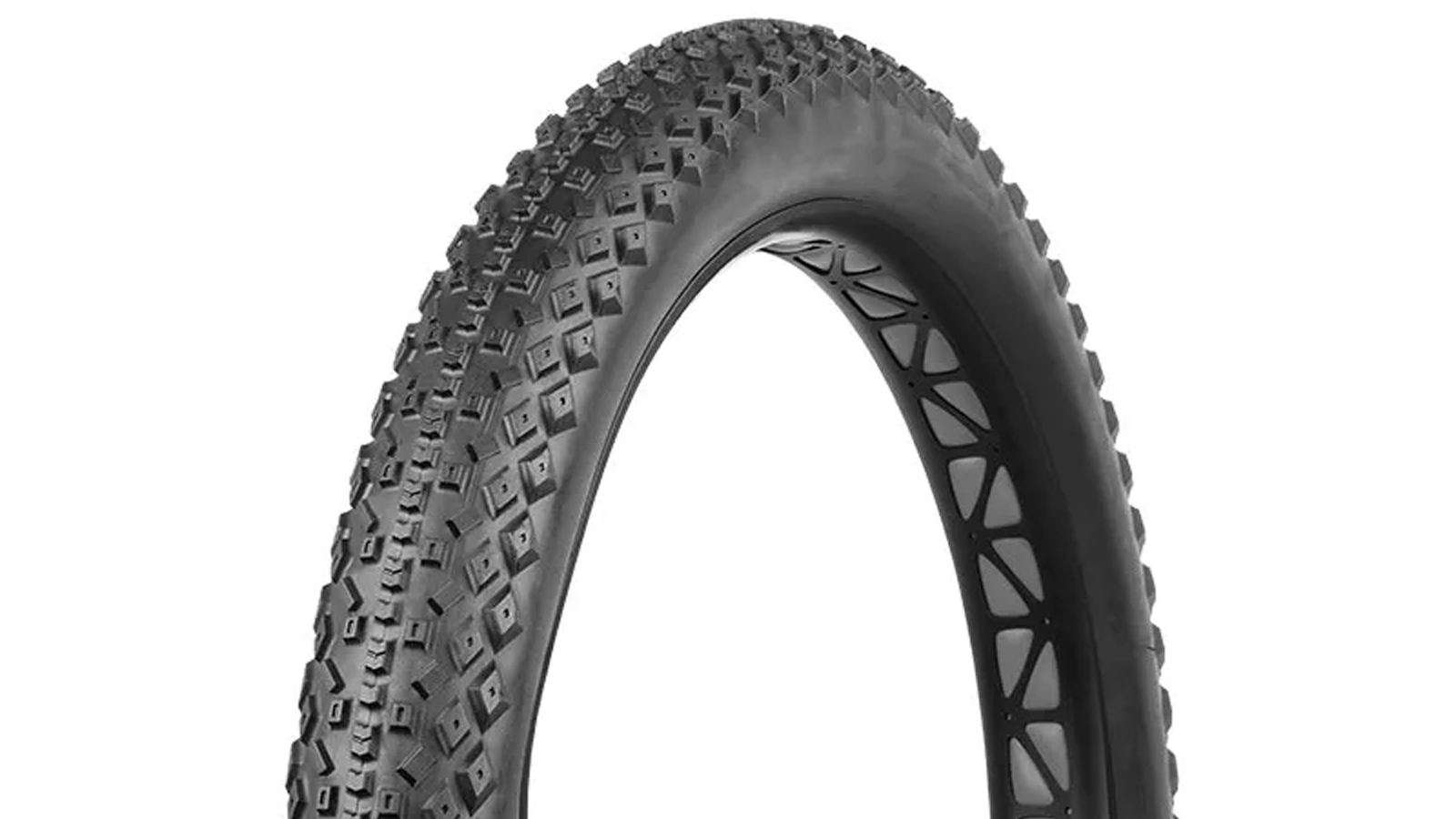
Vee Tire Co. Rail Tracker
Specifications
Reasons to buy
Reasons to avoid
To keep rolling speeds fast and cornering predictable, the Rail Tracker sees a low tread profile in the center and more aggressive knobs on the sides. To amplify this feeling further, Vee has also used a dual rubber compound which makes side knobs softer and the central tread firmer.
This tire boasts seriously impressive rolling speed on hardpack terrain, and if you’re really wanting to stand out while doing so, the Rail Tracker is available in bright white too.
The flip side of the fast-rolling slim profile is the lack of braking tracking on slippery terrain, as the small center knobs don’t offer much in regards to stopping power.
How to choose the best fat bike tires
1. Width
It wouldn’t be a fat bike without massively wide tires. Any tire over 3.8’’ fits into the fat bike category, with most ranging between 4.0’’ and 5.0’’ in width. But why are they so wide? Fat bikes are designed to tackle unstable and tricky terrain, such as sand and snow so the super-wide tire allows the bike to float rather than sink.
2. Tread Pattern
Deciding on a tread pattern comes down to how and where you intend to use the bike. As a rule, tires with smaller and slimmer tread patterns tend to roll fast, therefore are more efficient over longer rides but limits traction. More aggressive tires cut the ground and generate grip on testing terrain, which provides more grip when climbing up loose and slippery surfaces or when cornering in mud. Assessing your regular riding locations is a must before choosing your next tread pattern.
3. Weight
Due to their overall size, fat bike tires are never going to be light, but reading the overall weight carefully could make a difference to your riding. Lighter tires roll easier and will save energy over long distances but could compromise on protection, resulting in more punctures.
4. Casing
Thicker, more heavy-duty sidewalls offer more protection against rock slashes and pinch flats, but if the tire is too thick, the overall feel could become numb and grip could be compromised. Lighter casing tires usually weigh less so getting up to speed is easier, however, they’re more vulnerable to ripping when ridden in sharp terrain.
5. Air Pressure
Going as low as possible is the name of the game with fat bikes and between 8-10psi is the common goal. With the air volume being so big, a pressure change of 1psi can make a huge difference so it’s worth experimenting to find your ideal setup.
6. Tubeless
With low tire pressures in mind, switching to a tubeless set up can be the answer to achieving the softest setup. Tubeless also eliminates the chances of getting a pinch flat so it’s an all-out awesome upgrade that’ll boost reliability too. It’s worth noting that wheels and tires need to be tubeless compatible, however, aftermarket upgrade kits for fat bikes are becoming readily available.
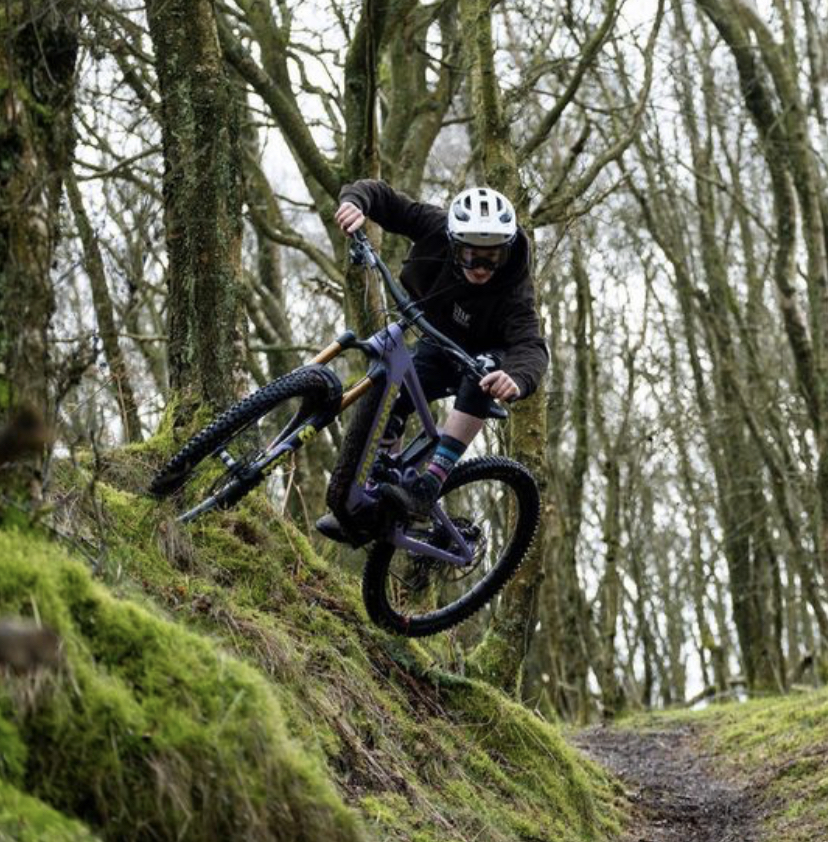
Jim Bland is a product tester and World Cup downhill mechanic based in North Yorkshire, England, but working Worldwide. Jim’s chosen riding genre is hard to pinpoint and regularly varies from e-bike-assisted shuttle runs one day to cutting downcountry laps the next. Always on the hunt for the perfect setup, Jim will always be found comprehensively testing kit with World Cup racing levels of detail. His ultimate day out includes an alpine loam trail, blazing sunshine, and some fresh kit to test.
Rides: Santa Cruz Hightower, Santa Cruz v10, Specialized Kenevo.
Height: 170cm
Weight: 64kg
